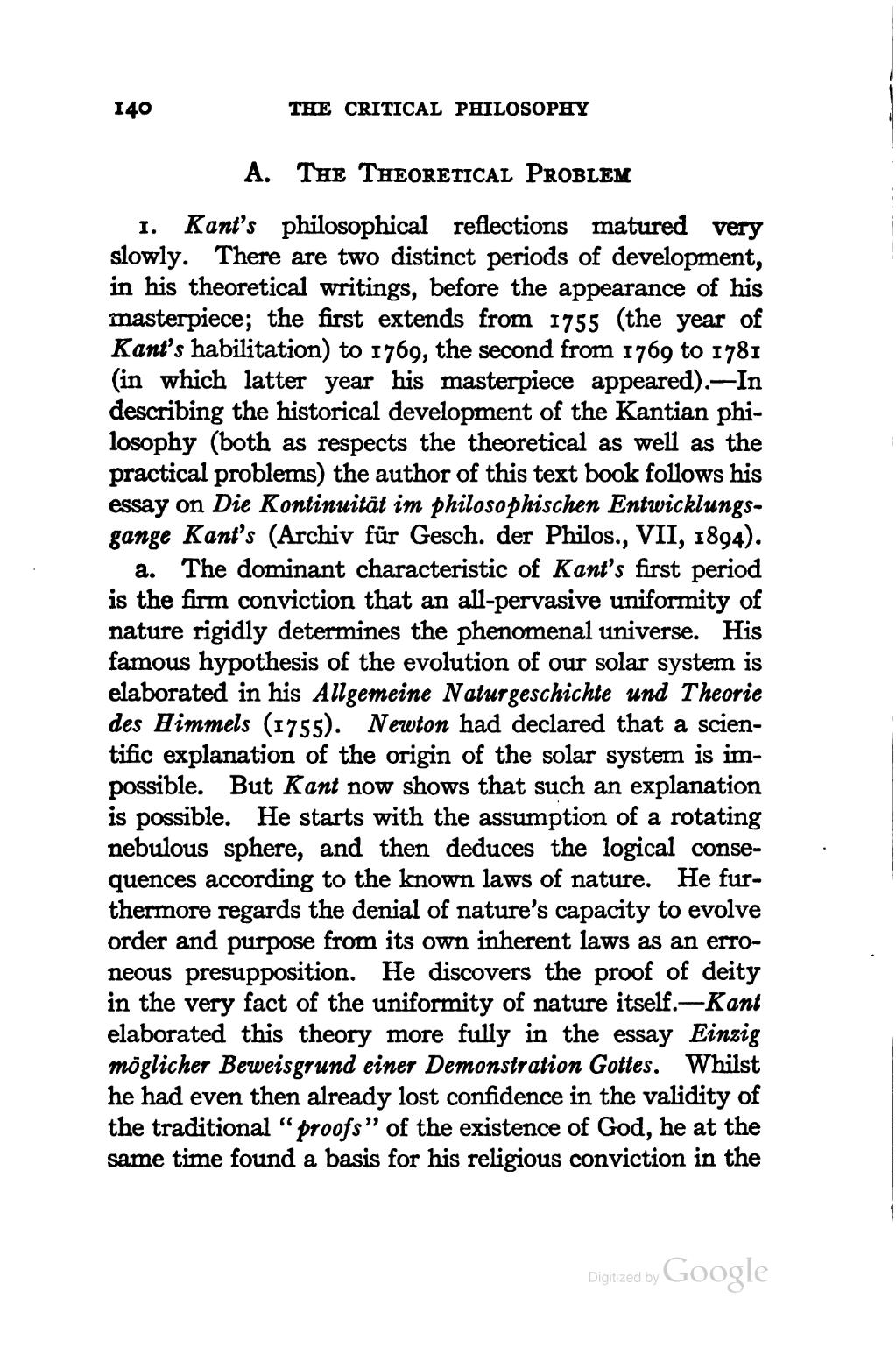A. The Theoretical Problem
1. Kant's philosophical reflections matured very slowly. There are two distinct periods of development, in his theoretical writings, before the appearance of his masterpiece; the first extends from 1755 (the year of Kant's habilitation) to 1769, the second from 1769 to 1781 (in which latter year his masterpiece appeared).—In describing the historical development of the Kantian philosophy (both as respects the theoretical as well as the practical problems) the author of this text book follows his essay on Die Kontinuität im philosophischen Entwicklungsgange Kant's (Archiv für Gesch. der Philos., VII, 1894).
a. The dominant characteristic of Kant's first period is the firm conviction that an all-pervasive uniformity of nature rigidly determines the phenomenal universe. His famous hypothesis of the evolution of our solar system is elaborated in his Allgemeine Naturgeschichte und Theorie des Himmels (1755). Newton had declared that a scientific explanation of the origin of the solar system is impossible. But Kant now shows that such an explanation is possible. He starts with the assumption of a rotating nebulous sphere, and then deduces the logical consequences according to the known laws of nature. He furthermore regards the denial of nature's capacity to evolve order and purpose from its own inherent laws as an erroneous presupposition. He discovers the proof of deity in the very fact of the uniformity of nature itself.—Kant elaborated this theory more fully in the essay Einzig möglicher Beweisgrund einer Demonstration Gottes. Whilst he had even then already lost confidence in the validity of the traditional "proofs" of the existence of God, he at the same time found a basis for his religious conviction in the

